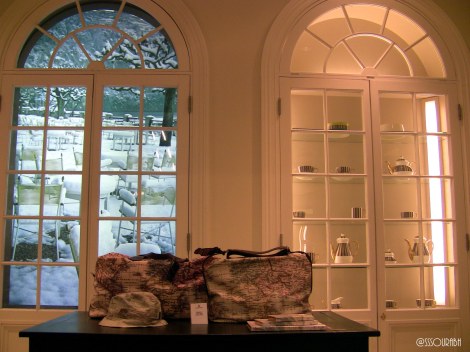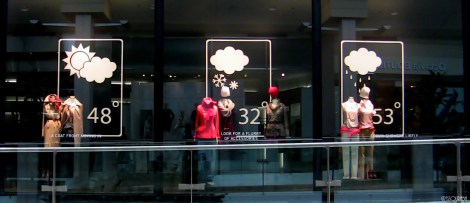Although previous documented with reference to ice cream’s diversifying segmentation, the emotionally driven framework, or better known as The Mindset Framework, definitely deserves a pedestal of its own for future elaboration and consistent referencing.
The Mindset Framework was born from my thought of what drives people towards indulging in something that is extremely unique and different, mainly with reference to inedible edible looking body care products! But there are many other seemingly rational but rather offbeat choices that the human mind makes, and even some ordinary and mainstream brands and products that consumers devour day after day. Although not all of these are as bizarre as the ones elaborated in the series of Out of Hand Observations that I have begun to collect in chronicles, they nevertheless are impulsive, compulsive, or thought-out purchases. The science of buying is overall driven by emotional decision making.
Broadly speaking the psych of consumers determined by their strong emotional reaction to products. Although these vary between individuals, they can be placed into two broad dimensions: emotional attraction and emotional intelligence, that is, the inner force that binds us to a product and what it makes us feel towards it. If these are weak, they will not induce a trial or purchase. Thus the dimensions for positive (and possibly recurrent) uses vary from strong to very strong. This gives rise to four mindsets, which can be perceived as four target markets, in what I have labeled The Mindset Framework, made for those driven by emotional decision making.
Loyalty
Loyalists are a strong category for all marketers to explore, as these are the ones who have sustained the tests of time and changes in trends to really prove their affinity towards a certain brand or a type of product. Brands who pride themselves with their cultural history and flagship heritage fall into this bracket. Since this target group is less likely to try new things and are perhaps the late adapters of Roger’s adoption curve, this is a market that will be less likely to try the cool, new, and borderline bizarre products that are hitting the markets with the frequency of raindrops in Western Europe. This is the group that in short, will not be bored of the vanilla.
Responsibility
This market segment focuses on social responsibility, and is thus high on emotional intelligence. Responsiblists believe that the benefit of going natural is the new revolution. This segment also enjoys the cyclical nature of products, given that the world is moving back towards finding the origins of products, away from the flashy promises and more towards a true, earthy concept. Given that our ancestors used to use raw ingredients to bathe and pamper themselves, the age groups in this segment are potentially quite variable. A notch further than the loyalty segment, this is one that is appropriate for brands branching out to reach the green phenomenon, or companies starting afresh from a grassroots approach.
Passion
High strung on emotional attraction, Passionists seek adventure, as these are the people that will not grimace at the paradoxical or bizarre new face of products that brands are churning out. Rather, this group will embrace them with open arms and minds alike, thus dissimilar to the Loyalty mindset. Due to the more momentary emotional appeal, this market segment would be one that is perfect to target for seasonal variations in consumer and electronic products, which advertise their new flavors, new colors, movie endorsements and splatter consumers with the ‘must-haves’ at any given point in time. This is also the target segment for new businesses with a wildly creative idea as their driving force. Consider this to be a akin to a fad in a fundamental marketing matrix. The risk for marketers is that this group is short-term hype driven with a small memory to match, and may thus forget about their flash favorite when the next new, cool, awesome thing hits the shelves with jazzy promotion and maddening frenzy.
Innovation
Cliched as the mindset may sound, innovators are the futurists, who recognize the lovemarks from the fads, an ability not prevalent in the Passion mindset. They bring more attraction to the Responsibility mindsets, thus landing them in an enviable position virtually akin to fortune-telling. On identifying the applicability of trends that can be made sustainable and extended into the future, they readily accept these for a longer term appeal, unlike those that are seasonal. Making the responsible trends more sustainable and efficacious, this group thus determines the combination of both Passion and Responsibility. New buzzing trends and even seasonal trends that sell way past the seasonal life are credited to this mindset. Talk about (literal) power in the hands of the consumer!
So, whats your mindset?




Pingback: Out-of-Hand Observations 1: Fashion Friendly or Faux Pas? « Food, Fashion & Frameworks·
This is a great motivation analysis. Thanks for sharing! I’ve been looking for insights like these on the web for quite a while now, so I’m really glad I came across your blog. How did you train or learn about doing this? If you don’t mind my asking for guidance. Thank you!
Hi no problem at all! Thanks for liking it! I’m quite passionate about what makes people tick, why they make their choices, consumer behavior in general, and the likes, and putting things into matrices is always fun. So its a combination of what I like doing and finding the most effective way to present it – usually ends up being pictoral or diagrametic (to think this is a ‘text blog’!). Hence the third ‘f’ of frameworks in my title. You have a great blog too, checking it out now!
Thanks, it scares me to even be “flattered” at the thought of you saying anything positive about my blog. I aim to get to a point where I can write about analysis like you do, but I haven’t gotten to that point yet. I’m in the consumer research field as well, but I’m still a “fledgling”. And I laud how you are able to put your analysis into frameworks, mine end up text-based (kind of laborious to digest). I’ll just look forward to more of your posts!
Great article! I recently took the Myers Briggs type indicator test. I think that like with MBTI, the mindset framework is a good indicator of your strongest preference. I think I’d find the advertising/marketing industry very interesting.
Yes you are quite right, I hadn’t thought of comparing them before! I took the Myers Briggs a while ago, I forgot what my results were but I see how you are drawing the correlations. Indeed with thoughtful spotting and well conceived blog, you’d be a good fit for marketing!
Pingback: Thy Nose Knows Best « Food, Fashion & Frameworks·
Pingback: Out of Hand Observations 2: Fashion Camouflage « Food, Fashion & Frameworks·
Pingback: Sustaining Hype: Give me an Anxiety Attack « Food, Fashion & Frameworks·
Pingback: Understanding Opportunities behind Emotional Decision Making | Shopper 360·
Pingback: Catching up with Celebrity Chefs over Demonstrations at the NYCWFF |·
Pingback: Where does Online Shopping leave Glamorous Window Displays? |·
Pingback: Andy Warhol’s Self Portraits, Silver Factory and SUPER Sunglasses |·
Pingback: Bonkers over a 3XL Brunch at Bongo Room |·
Pingback: Traditions of Luxury Window Shopping, now in a Digital World | 3FS: Food Fashion Frameworks·
Pingback: Life via Glass Mosaics and Magic Gardens in Philadelphia | 3FS: Food Fashion Frameworks·
Pingback: Overcoming Boxed Definitions: Using Fashion to Showcase a Gender Neutral Platform | 3FS Lifestyle: Food Fashion Frameworks·